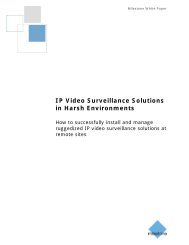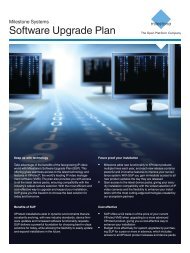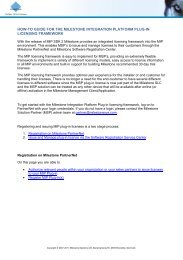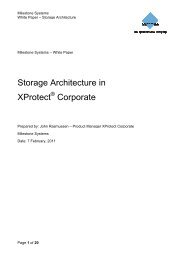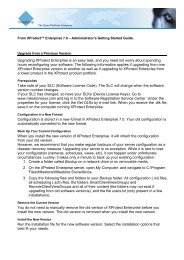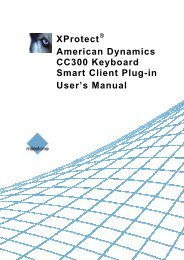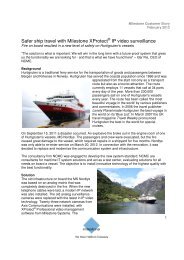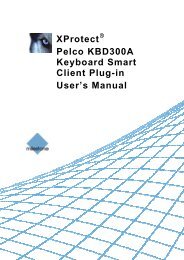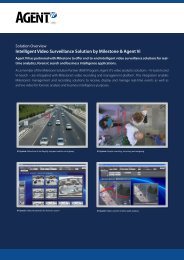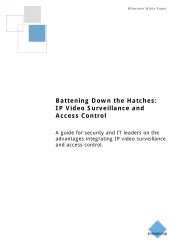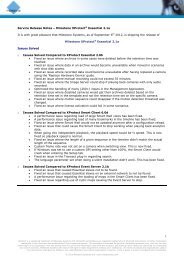XProtect Express 1.1; Administrator's Manual - Milestone
XProtect Express 1.1; Administrator's Manual - Milestone
XProtect Express 1.1; Administrator's Manual - Milestone
You also want an ePaper? Increase the reach of your titles
YUMPU automatically turns print PDFs into web optimized ePapers that Google loves.
<strong>Milestone</strong> <strong>XProtect</strong> ® <strong>Express</strong> <strong>1.1</strong><strong>Administrator's</strong> <strong>Manual</strong>NameDescriptionSelect which action to take if the database becomes corrupted:Repair, scan, delete if fails: Default action. If the databasebecomes corrupted, two different repair methods will be attempted:a fast repair and a thorough repair. If both repair methods fail, thecontents of the database will be deleted.Repair, delete if fails: If the database becomes corrupted, a fastrepair will be attempted. If the fast repair fails, the contents of thedatabase will be deleted.Repair, archive if fails: If the database becomes corrupted, a fastrepair will be attempted. If the fast repair fails, the contents of thedatabase will be archived.Database Repair ActionConfigure Dynamic PathsDelete (no repair): If the database becomes corrupted, thecontents of the database will be deleted.Archive (no repair): If the database becomes corrupted, thecontents of the database will be archived.If you choose an action to repair a corrupt database, this corrupt databaseis closed while it is repaired. Instead, a new database is created to allowrecordings to continue.Why archive a corrupt database? Provided the corrupt database hasbeen archived, it can often be repaired by the Smart Client. So when youopen the corrupt database in the Smart Client, the Smart Client will repair itautomatically if at all possible.Tip: There are several things you can do to prevent that your databasesbecome corrupt in the first place. See Protect recording databases fromcorruption (see "About protecting recording databases from corruption" onpage 165).With dynamic archiving paths, you specify a number of different archivingpaths, usually across several drives. If the drive containing the camera'sdatabase is among the path you have selected for dynamic archiving,<strong>XProtect</strong> <strong>Express</strong> will always try to archive to that path first. If not, <strong>XProtect</strong><strong>Express</strong> automatically archives to the archiving drive with the mostavailable space at any time, provided there is not a camera database usingthat drive. See also Dynamic path selection (on page 82).Event notificationWhen you configure video and recording (see "About video and recording configuration" on page 75) for specificcameras, properties include event notification:www.milestonesys.com 99 Advanced configuration



